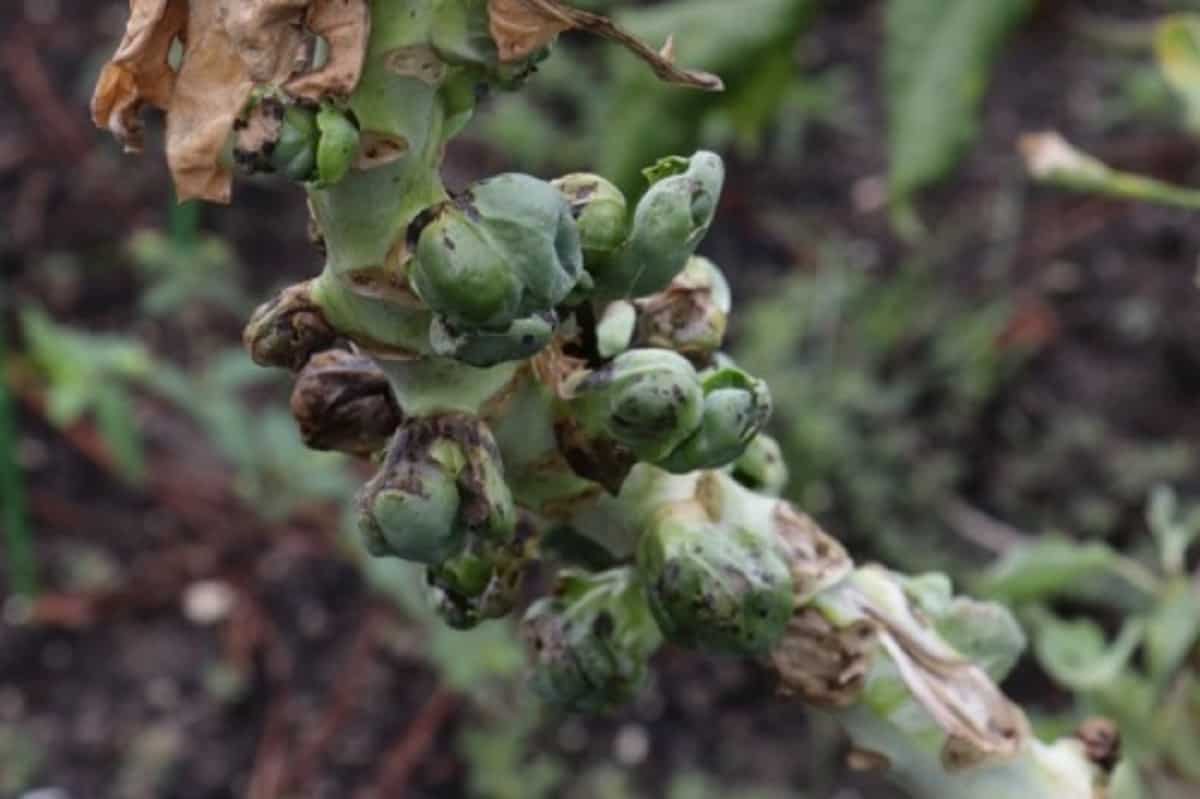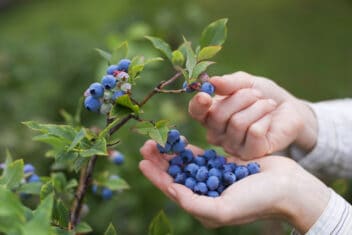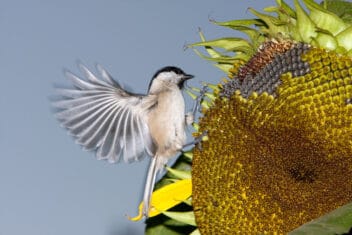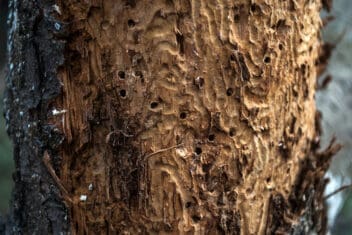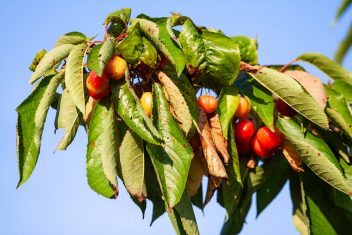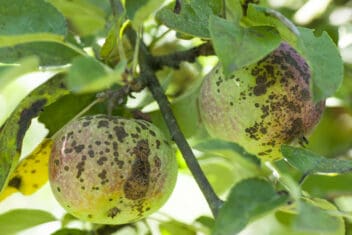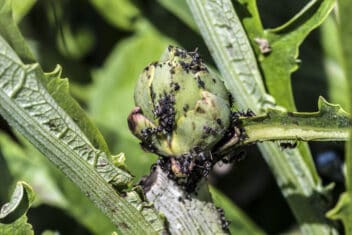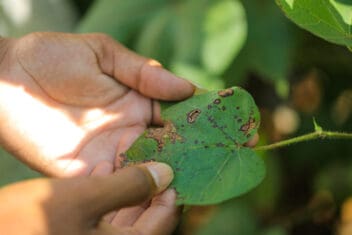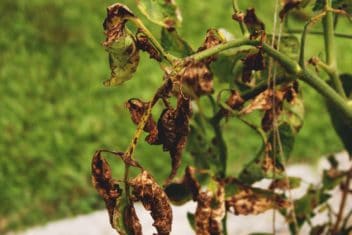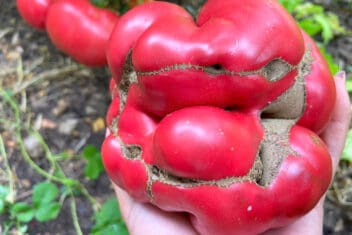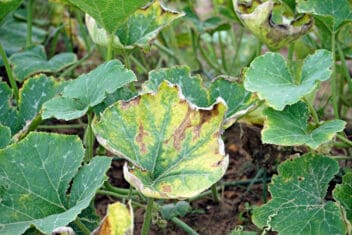From anthracnose to blossom end rot, sooty mold to verticillium wilt, it seems like there’s no shortage of diseases that can wreak havoc on your plants.
As a gardener, likely all you want is for your plants to grow healthy and produce ample amounts of vegetables for you to harvest. Sometimes, though, you have to work a little harder to keep them that way.
While good soil is essential when it comes to growing healthy plants (and soil bacteria and fungi are a necessary and vital part of that equation), there are some kinds of bacteria and fungi that can actually be harmful. One of these species is Rhizoctonia solani, a fungus responsible for the notorious wirestem disease.
What is wirestem, and what does it do to your plants? More importantly, how can you prevent and treat it if it does become a problem? I’ll tell you everything you need to know in this guide to wirestem disease.
What Is Wirestem?
Wirestem is a disease that affects all kinds of cole crops. Caused by a pathogen in the soil as well as seeds, it creates a variety of problems in your plants. Fortunately, there are several ways you can stop it from killing them altogether.
Although it’s not one of the most common diseases that affect plants, it can be deadly if left untreated. It can cause the basal stem on cabbage to become dark in color and develop soft spots. The head, on the other hand, might become spotted and develop wilted leaves.
It is also common for wirestem to cause issues with root development. That’s particularly true for plants that are grown for their edible roots. These can become mushy, dark, and inedible.
This disease (again, caused by a fungus named Rhizoctonia solani) can also cause seedlings to shrivel up and become dark in color. Eventually, they can succumb to a secondary disease known as damping off disease and ultimately die.
This fungus infects stems right at the soil line, effectively girdling the plant and stopping moisture and nutrients from traveling to where they need to be.
If you’re wondering where the name wirestem comes from, it has to do with how the stem of an infected plant becomes black and – you guessed it – wiry as the disease travels among the plant.
Signs of Wirestem
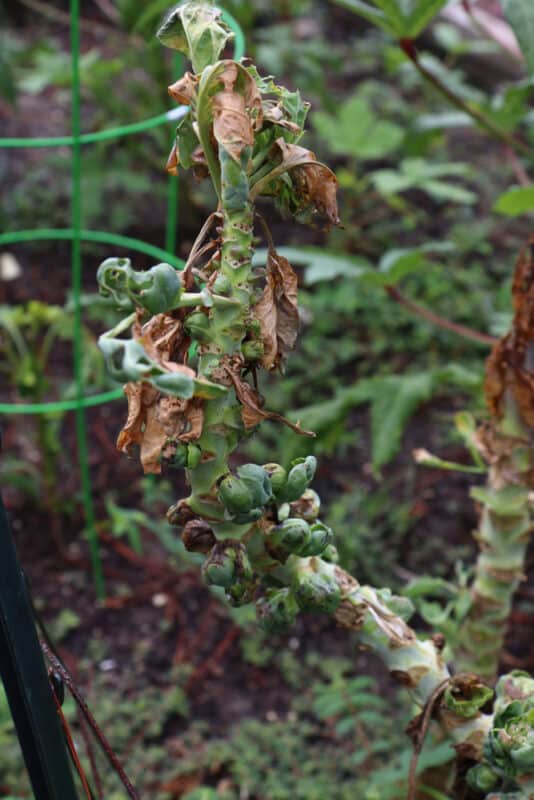
Wirestem can affect both plants that were seeded directly into the garden as well as those that were transplanted.
Although symptoms can vary among the many kinds of plants that this disease affects, you’ll most often notice dark lesions along the stem of the seedling or just on top of the soil line. These can vary in their length and depth but they often go all the way to the bottom of the root.
In severe cases of wirestem, you may notice that the entire outside layer of taproot disintegrates away, as do most lateral roots.
You might also notice symptoms like stunted growth, wilting, and leaves that take on a bluish tinge. This is usually found only in the newest sets of leaves.
Wirestem tends to be more prevalent in the fall than in the spring, as the pathogen will ramp up and become more active in warm, moist soil, rearing its ugly head just as things start to cool down.
What Plants Are Affected?
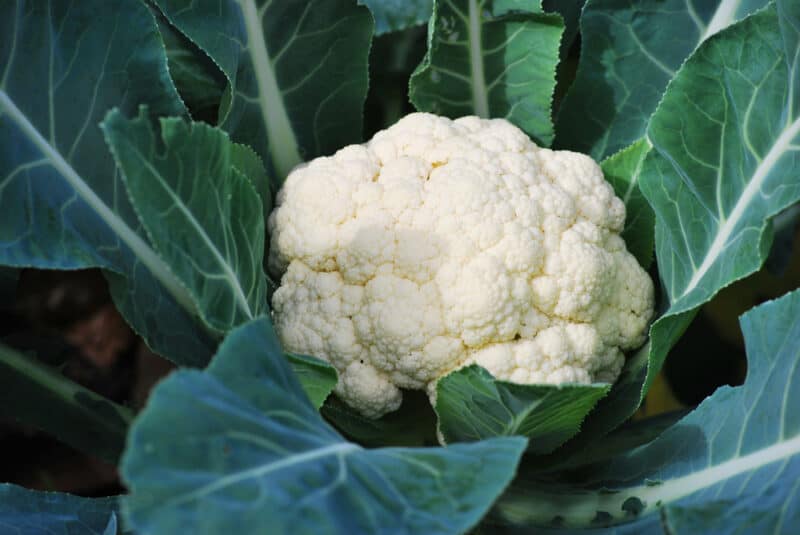
Wirestem can affect a wide variety of plants but is most common in the southeastern US.
All cole crops in the Brassica oleracea family are vulnerable to this disease. This includes plants such as:
- Collard greens
- Kale
- Cabbage
- Cauliflower
- Broccoli
Other cruciferous crops, like turnip, mustard, and rutabaga, can also be affected. However, they belong to different types of Brassica and usually suffer less from this disease. Plants are the most vulnerable when they are young, as their stems will become thicker and more disease-resistant as they age.
How to Prevent Wirestem
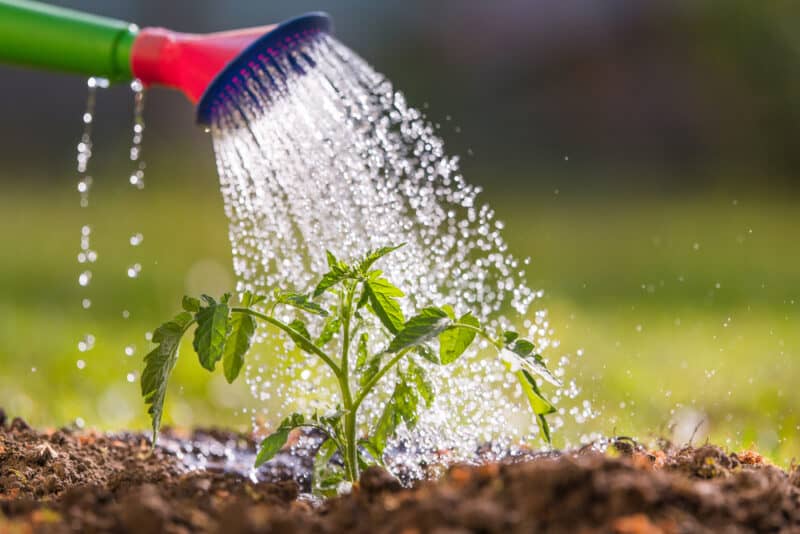
Although wirestem isn’t the most common disease you’ll have to deal with in the backyard garden, the steps you can take to prevent it are similar to the ones you might take to prevent other kinds of disease.
1. Purchase Healthy Seeds and Transplants
When you are selecting seeds and transplants you want to grow in your garden, choose those that you know come from disease-free stock. The fungus responsible for wirestem overwinters in the soil and can easily be introduced to an area by infected transplants or seeds.
Not only should you choose healthy plants to start with, but also make sure you clean up the garden at the end of each growing season. Just in case there are pathogens lurking among your old plants, this will help remove them so you don’t spread them to next year’s garden.
2. Prevent Cross-Contamination in Wet Weather
Wirestem spreads more easily during periods of cool, wet weather, as is the case with most fungal diseases. Avoid working with or among your plants when the weather conditions are favorable for fungal spread. You may also want to clean your equipment and footwear after working around plants that may be infected, as you can spread spores in this way, too.
3. Improve Soil Porosity and Circulation
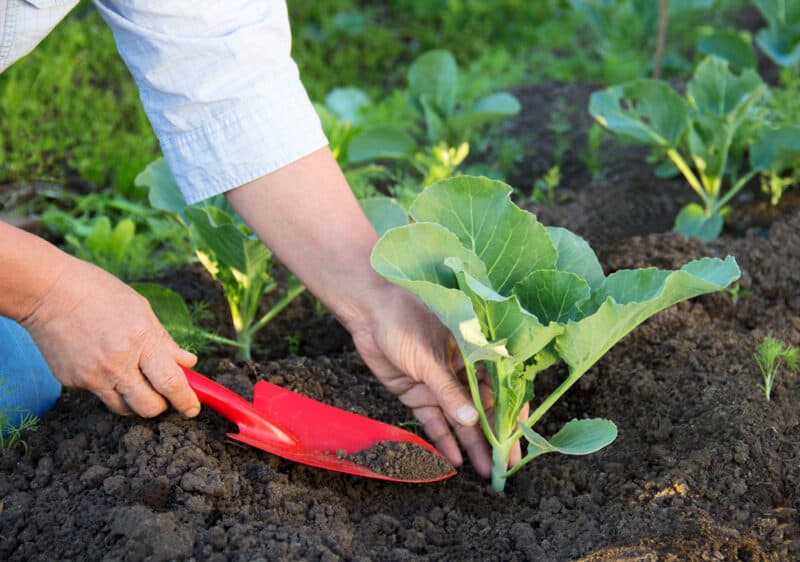
Aerate your soil by using mechanical methods or by amending with a material like compost. This will help reduce the risk of the disease when it comes to its spread in the soil.
You should also follow recommended guidelines for spacing when you are planting your cole crops. Prune plants if they grow too close together to open up more room for air to flow freely – this can reduce the risk of spread between your plants. Be careful about planting transplants deeply, as this, too, can increase the risk of wirestem rot.
Instead, plant just deep enough to cover the root ball and a small portion of the stem.
4. Rotate Crops
Rotating your plants between seasons is a good idea for many reasons, but one of the best is that it can help prevent the likelihood of fungal diseases like wirestem. If you know you have any wild crucifer plants growing in the garden, weed them out immediately.
5. Prepare the Soil Before Planting
Wirestem is more common in heavy soils with clay and loam. This is perhaps because the soil is not well-draining. When you plant, try to choose a location that is well-draining (or use raised beds). Consider using a cover crop like rye before planting to help open up the soil without adding too much nitrogen.
6. Watch for Excess Nitrogen
If your soil is high in nitrogen, you may have an increased risk of wirestem. That’s because high soil nitrogen levels make it easier for the fungal spores to attack plant stems more quickly. It can also make your plants more tender and susceptible to the disease.
7. Use Fresh Potting Soil
There have been some cases in which wirestem appears on greenhouse-grown transplants because the potting mix used to grow them was contaminated or was mixed with infested native soil. Never use soil directly from the garden to start your seeds and always make sure you use a sterile mix.
8. Implement Good Watering Habits
Last but not least, take the time to water your garden properly. Water from the base of the plant rather than the top and make sure you allow the top layer of soil to dry out before you add any more water. If you can, water first thing in the morning so your plants have plenty of time to dry out before nightfall.
How to Treat Wirestem
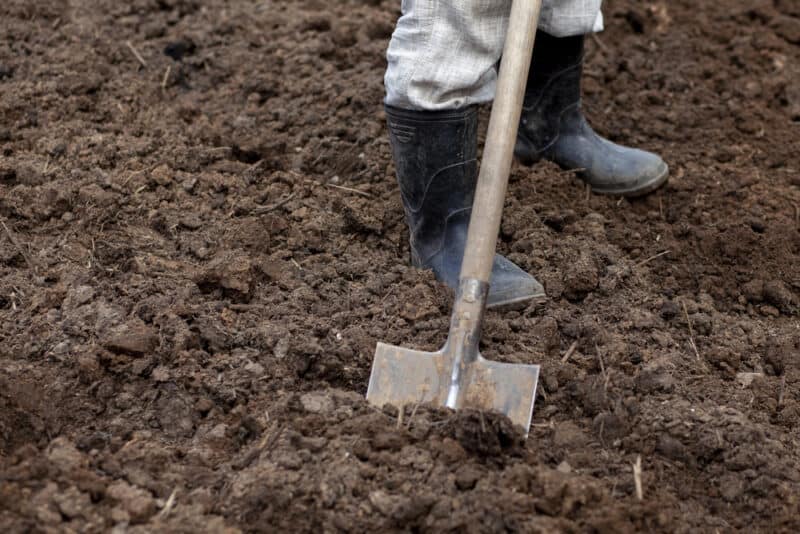
There are very few ways to treat wirestem in the garden. With no truly resistant crops available and no chemical treatments that are consistently reliable, preventing wirestem is by far the most effective method of treating this disease.
1. Watch the Soil
If you dealt with wirestem in any area of your garden, do not plant cole crops in that area again. It can live in the soil indefinitely so it will likely never be safe for you to plant those vegetables there.
2. Discard Portions of Affected Plants
If your transplants develop wirestem, you may still be able to salvage them. Discard any transplants that have girdling lesions covering more than 75% of the stem. Plant healthy transplants shallowly and apply a fungicide as a preventive method.
3. Fungicides
There are some fungicides you can use on your soil or to treat seeds, such as pentachloronitrobenzene. However, you need to be cautious using these, as many of them are carcinogenic and must be used carefully. Always check with your local cooperative extension to make sure the fungicide you choose is safe to use in your area.
Be Vigilant When Treating Wirestem in the Garden
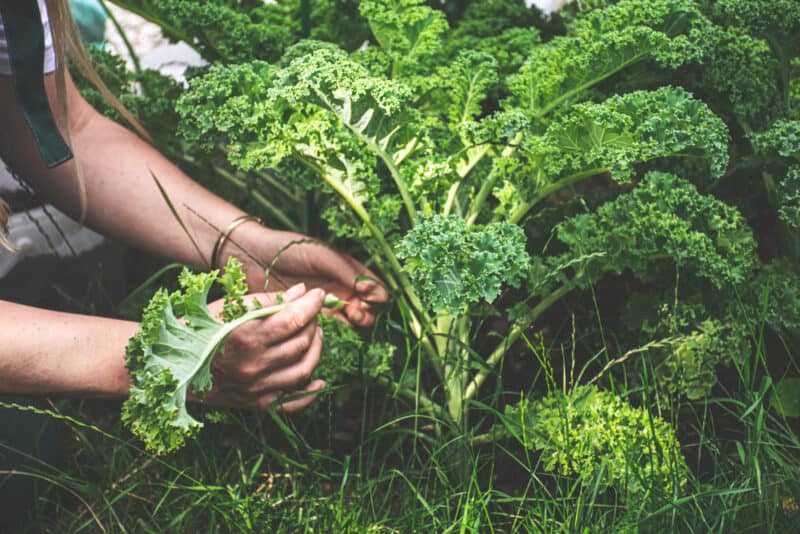
When it comes to getting rid of wirestem, the good news is that this disease is relatively rare – but the bad news is that it can be tough to get rid of once it does set in. Fortunately, it’s relatively easy to prevent with good soil management and cultural practices along with sanitation and regular crop rotation.
While there are some less susceptible cultivars of cole crops, like ‘Blue Max’ collard greens, none are truly resistant.
By following these steps, you should be able to kick any concerns you have about wirestem to the curb.
